Top 7 Invasive Weeds in the SF Bay Area
Prevention and Control of Top 7 Invasive Weeds Using the Least Toxic Practices
Our report on the top 7 invasive weeds in the SF Bay Area was re-worked from one I posted in 2016 weeds typical in the San Francisco Bay Area including the most invasive weeds.
The top 7 invasive weeds is focused on the worst for good reason. This summer promises to be hot. Some of the top 7 are highly flammable. Our treatment options for getting rid of the top 7 emphasize the least toxic solutions. Hand pulling or mechanical means for some, at the right time, can be effective.
Our Recommendations
We suggest a combination of prevention, mechanical or biological means.
Sometimes a chemical solution is necessary, but only that is so.
The results of 2018’s on and off rainfall and intermittent heat waves have seen a prolific crop of bull thistle (pictured above) and oxalis.
See the full report on managing weeds. It includes 13 weed types, prevention and control.
[ddownload id="1283"]
Prevention – the First Line of Defense
|
Plant Choices
The right plant in the right place sounds simple but makes all the difference.
Healthy vigorous plants have the best chance of out-competing weeds. |
|
Healthy Soil
Make sure that plants are healthy by feeding the soil with organic products including mulch and compost.
|
|
Mulching and Sheet Mulching
Mulch keeps soil cool and moist. It deprives weeds of light. Organic mulches enhance soil structure and host insects which will devour weeds. Sheet mulching is layering of cardboard, newsletter or fabric. It serves as a weed barrier. Water Management
|
|
Proper irrigation is critical.
We recommend drip because the water goes directly to the root of the plant, not in between them. Spray irrigation can encourage weed growth.
|
The Most Invasive Weed Types
They damage our ecosystems by leaching nutrients from native species.
Some are highly flammable and at the same time consume valuable water.
Broom Species (French & Scotch)
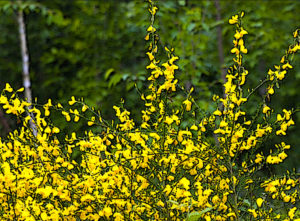 |
Plentiful in forests or wooded areas. They spread along roads and appear like small trees.
Despite their pretty flowers they are toxic to humans and animals.
BEWARE. They are fire hazards. With a hot dry summer coming , get rid of these.
Crowds out desirable species by leaching nutrients.
Seeds spread by wind
Treatment Options
Hand pull between January-May
Cut to just above ground
Cut and treat with an herbicide
Fennel or Licorice Plant
 |
Seeds spread by wind and competes with other plants for nutrients.
They will displace native plants in coastal areas.
BEWARE – This plant is also considered a fire hazard.
Treatment options
Hand pull when soil still wet.
Dig out as much of the root as possible with shovels, hand picks.
Mowing needs to be done at the right time or will encourage seed growth.
Bull Thistle
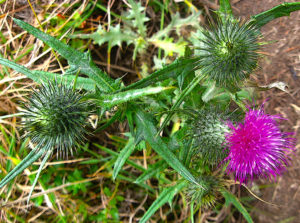 |
Showy purple blooms and sharp needle-like leaves.
Grows where soil is disturbed. Spreads rapidly.
Leaches nutrients from desired plants.
Treatment Options
Hand pull and step on stem before pulling
Mow before they flower
Herbicides
Cape Ivy
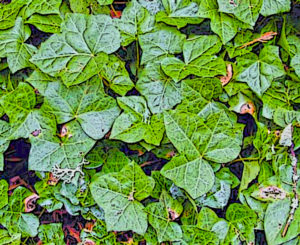 |
Forms a dense blanket over desired plants.
Distinguishing from less invasive ivy is difficult.
They choke off nutrients from understory vegetation, kill trees, harbor rats and snails.
Treatment Options
Requires precision as every stem must be removed.
Removing around the perimeter of a patch.
Because removal is complex cutting and using herbicide may be advised.
Himalaya Blackberry
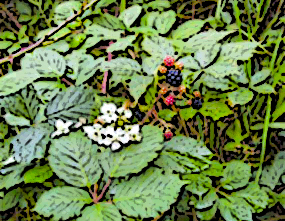 |
Don’t confuse this with native blackberries! Natives are smaller and don’t tangle and sprawl.
The Himalayan Blackberry grows in dense thickets, covered in thorns.
Highly invasive and difficult to control.
They leach out nutrients from desired plants and shade out light.
BEWARE they are also a fire hazard
Treatment options
Mechanical – digging up root tall
Burning of mature plants only with consultation with a professional
Unfortunately, treating with concentrated herbicide is one of the best ways.
Periwinkle or Vinca Major
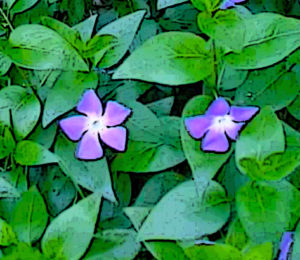 |
Vinca Minor is okay! The two types look a little different
Vinca Major leaves are broader, larger; heart shaped.
Vinca Minor leaves are smaller, elongated.
Major is a pest. They root wherever their stems touch soil.
They spread rapidly in shady creeks; drainage areas. And, they choke off natives.
Treatment Options
Hand pulling will work if roots are not deep, soil is loose and moist. (put plants in plastic bag & destroy)
Mechanical means (put plants in plastic bag and destroy)
Foliar spray can work
Cutting and treating with an herbicide is effective if all else fails.
Ice Plants
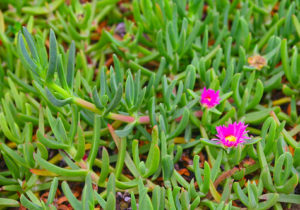 |
Competes with native plants.
Seeds are prolific. They move from landscaped areas to natural areas.
Pieces of the plant can be washed into storm drains.
They form a dense mat which can harbor rats and contribute to soil erosion.
Research has shown that where they root, ice plants make long term changes to the soil.
A snippet from one study found that when the ice plant was removed both native and exotic plant
species returned. But natives were less abundant.
Treatment Options
Hand puling is effective, just do it early.

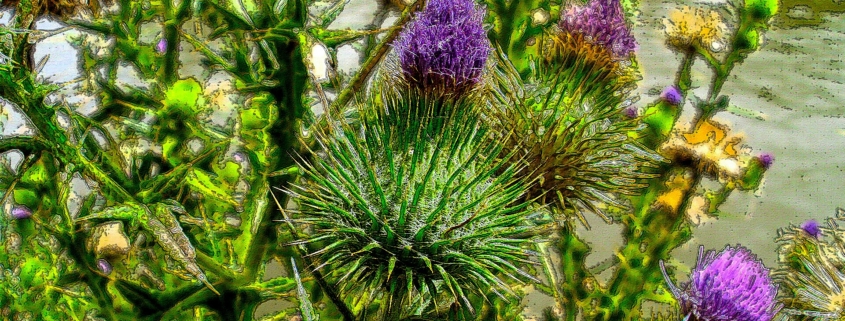
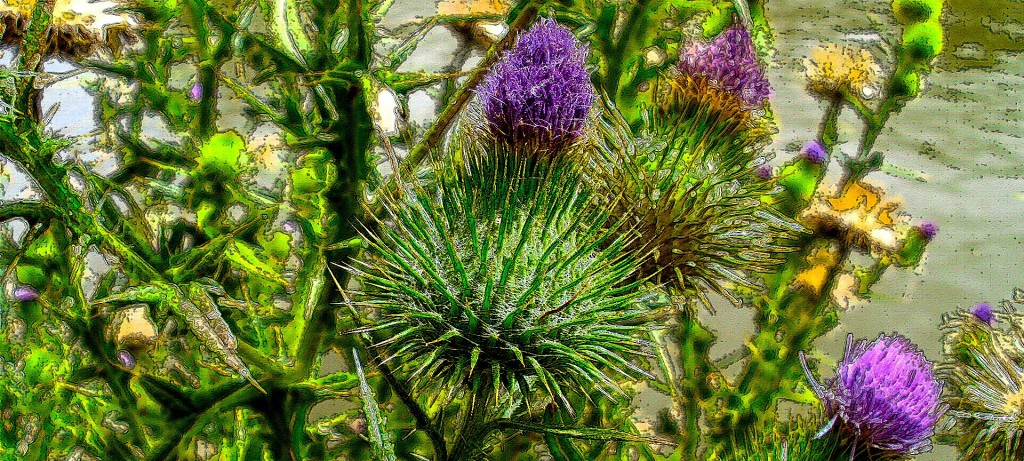
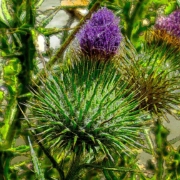

The photo in the cape ivy portion of the article is actually of English ivy. FYI.
Cheers,
Ginger